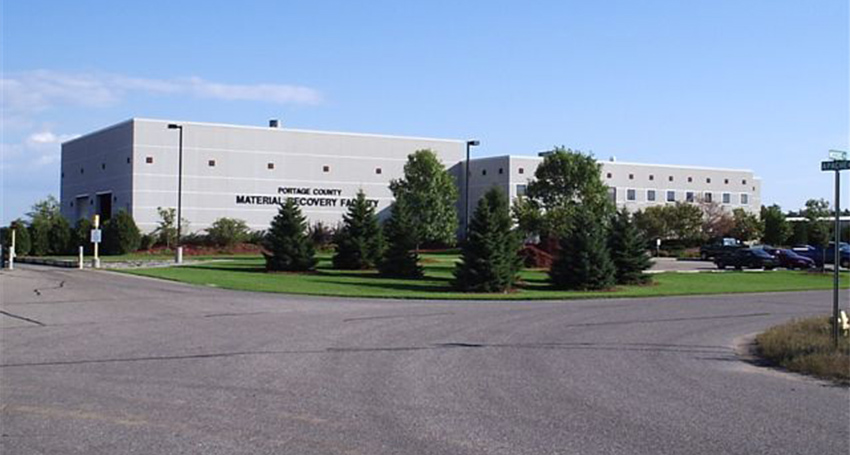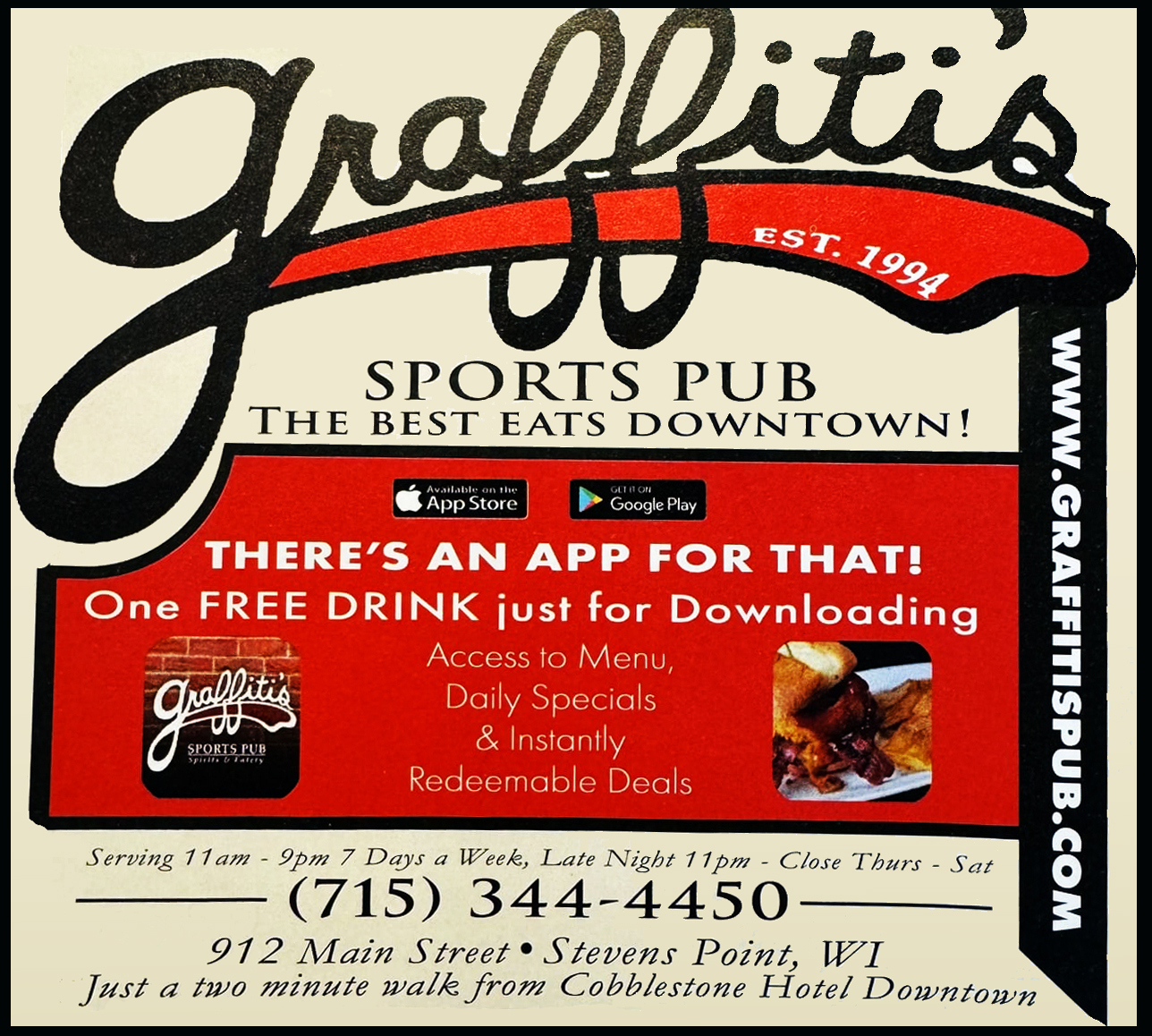Column: A recyclable’s journey
By Amanda Haffele
Most recyclables in Portage Co. are transported to the Portage County Recycling Facility, located in Plover.
When they arrive, trucks stop on the scale and are weighed. Once weighed, the trucks make their way around the site to empty their contents inside the recycling facility.
Inside, a front end loader scoops up the recyclables and dumps it into an open top semi-trailer. Once full, the trailer is covered and materials are transported to Outagamie County’s Materials Recovery Facility (MRF) for sorting.
At the MRF, the recyclables need to go through presort line where easy to spot contamination is removed. This can include black garbage bags, propane cylinders, sharps or needles, large pieces of metal, diapers, or even a huge chunk of cheddar cheese (as was the case at the Outagamie Co. MRF a few years back).
After presort, glass is generally removed due to its abrasive nature. Screens or spinning metal shafts with rubber disks separate two-dimensional materials (paper/cardboard) from three-dimensional materials (cans/bottles).
Machines like optical sorters or robots separate out plastics, eddy currents remove aluminum cans, and magnets remove steel cans. The remaining material is considered residual or garbage and will go to the landfill.
Recyclables are then baled and semi loads of bales are sold to processors and manufacturers who create new products and goods. Bales are approximately 60 inches long, 45 inches wide, and 30 inches high, and weigh anywhere from 625 pounds to 1,450 pounds, depending on the material being baled.
Paper and cardboard are sold to paper mills in the Green Bay area. Clean glass is bought by a glass processor in Delavan before being resold to nearby end markets. Non-salable glass is used as alternative daily cover at the landfill in Appleton.
Steel cans are sold to mills in Wisconsin. Aluminum cans are sold to buyers in Georgia and plastic bottles and containers are sold to a processor in Michigan.
Once a purchase agreement has been made, the company that buys the materials sends a release number that is used to verify and track what’s being picked up. Semi-trucks are weighed before and after being loaded so there is a record of each material’s weight. This weight is used for billing and record keeping purposes.
The baled recyclables journey to their new home where some are processed further before eventually being remade into new materials. Secondary processing can include anything from sorting plastics or glass by color or type using machines, washing, flaking or grinding materials into smaller pieces, or even melting them into blocks for later use.
What do recyclables become?
Plastic bottles and jugs, such as soda or water bottles, are transformed into items such as t-shirts, sweaters, fleece jackets, insulation for jackets and sleeping bags, carpeting and more bottles.
Detergent and milk jugs might be made into new bottles and containers, plastic lumber, picnic tables, lawn furniture, playground equipment, recycling bins, and more.
Butter tubs and yogurt containers are recycled into new food storage containers, plastic dishes, take-out containers and more.
When cardboard and paper are recycled it’s used to make new tissue paper, toilet paper, napkins, and notebook paper.
The majority of glass bottles and jars are recycled into new bottles and jars, but others are turned into fiberglass that’s used to make insulation, and specialty items such as countertops. Other uses of glass include glass road beads (used to help with reflective properties in road paint) and sand blasting media.
Non-salable glass (glass that’s too contaminated with paper shreds, food debris, dirt, bottle caps, and other non-recyclable materials) is used as an alternative cover at the Outagamie Co. landfill in Appleton. Landfills need to be covered each night with an approved medium to reduce litter and rodents. Non-salable glass is a great alternative to soil.
Steel and aluminum cans are used as feedstock to create items such as new soda or soup cans, baseball bats, building materials for vehicles, structures, and homes, as well as parts for bicycles or playground equipment.
In 2023, Portage County residents recycled approximately 6,000 tons of recyclables which is equivalent to the weight of approximately 1,263 full grown African elephants.
As always, if you have any questions give us a call at (715) 343-6297, visit us online at www.co.portage.wi.gov, or join our Facebook community @PortageCountyRecycles.
Amanda Haffele is the Portage County Solid Waste Director. She works at the Material Recovery Facility, 600 Moore Rd., Plover, and can be reached at 715.343.6297 or [email protected].


